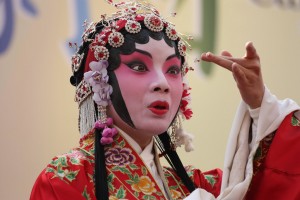Language Door West Los Angeles opened in 2001, and has provided classes in dozens of languages to students from all over the Los Angeles area. Our focus is on small group classes to maximize the interaction between students and teachers. We also offer private lessons, translations, interpreting services, and corporate classes.
Cantonese (or Yue) is one of the five major Chinese languages. These are often called “dialects”, but in actuality their differences are great enough to consider them separate languages.
Fun Facts About Cantonese
- Cantonese is associated with a very distinct culture both in China and around the world.
- One example is Cantonese cuisine, which is well-known in Western countries. Classic Cantonese cooking is characterized by its use of mellow sauces and ingredients such as spring onions, sugar, garlic, soy sauce and sesame oil. The prevalence of Cantonese cuisine in the West is largely because most of the Chinese who have immigrated to other countries in the past have departed from Canton and surrounding areas.
- One of the most famous Cantonese delicacies is “Dim sum” and it means touch the heart. It is usually served at breakfast, and ladies will wheel trolleys around the restaurant laden with bamboo baskets, which they will lift up to show you what is inside – small tasty dishes such as “Har gow” and “Siew mai”.
Learn to Speak Cantonese with Language Door Los Angeles Today!
Los Angeles Language Door’s expert teachers offer instruction for students of all ages. We keep our tuition prices low but offer quality instruction in a pleasant environment. Class size is small to maximize the interaction between students and teachers. Our teachers are native speakers and offer the hands on training that will enhance your learning experience.

[xyz-ihs snippet=”languages”]
 Countries Where Cantonese Is Spoken
Countries Where Cantonese Is Spoken
Cantonese is spoken by about 100 million people in the southern provinces of Guangdong and Guangxi and in neighboring areas such as Hong Kong and Macao, as well as throughout South-East Asia in such places as Singapore, Malaysia, Thailand and Vietnam. It is also spoken by overseas Chinese communities in Southeast Asia, Canada, Brazil, Peru, Cuba, Panama, Australia, New Zealand, Europe, and the United States where it is the third most common language in the country.
Cantonese is mainly an oral language. People in Hong Kong use standard Chinese (putonghua) when they read and write. They speak Cantonese in their daily interactions with people.
The History Of Cantonese
The word Cantonese comes from Canton, the former English name of Guangzhou, capital of Guangdong, which was once considered the home of the purest form of Cantonese. However, through years of mass media and pop culture influence, Hong Kong has now truly become the cultural centre of Cantonese.
Although Mandarin (or putonghua) is the standard and official language in mainland China, it has only been around for about 700 or 800 years, compared to the 2000-year history of Cantonese. Cantonese, not Mandarin, is the dominant language in overseas Chinese communities. This comes from the fact that, around the world, the largest flow of Chinese immigrants originates from Hong Kong.
What Is The Difference Between Cantonese And Mandarin?
Although Cantonese shares much vocabulary with Mandarin Chinese, they share the same base alphabet, but as a spoken language they are distinct, and are not mutually intelligible because of pronunciation, grammatical, and also lexical differences. Sentence structure, in particular the placement of verbs, sometimes differs between the two languages. Cantonese has 8 tones instead of Mandarin’s 4. Additionally the use of vocabulary in Cantonese also tends to have more historic roots.
